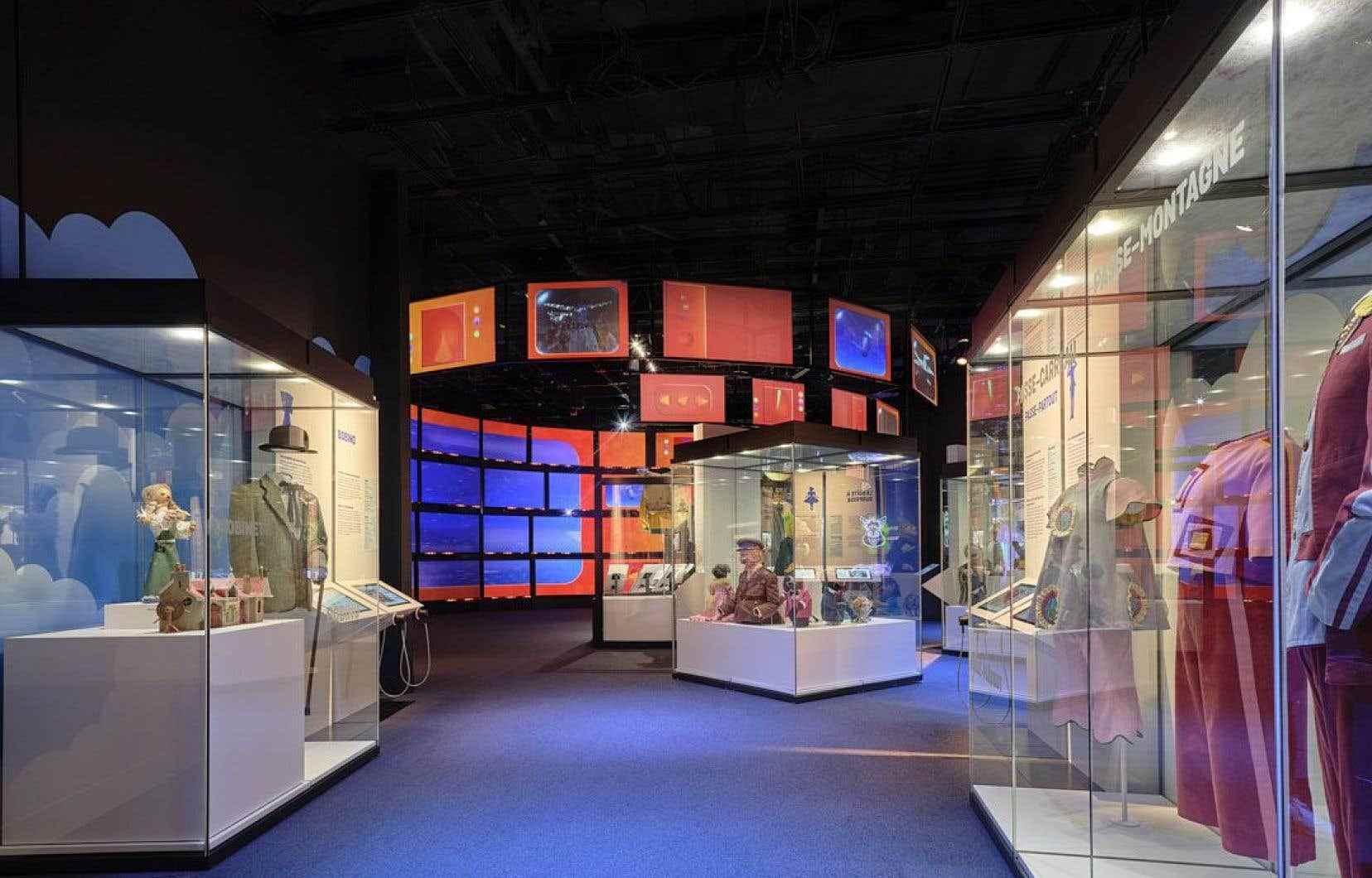This text is part of the special section Museums
At the Canadian Museum of History in Gatineau, the small screen becomes an artifact in Of Pepinot at Paw Patrol. Our television childhoodan exhibition for the whole family that brings together the best of Canadian programming for children aged 2 to 11.
“There is nothing more unifying than children’s shows,” says Olivier Côté, curator of media and communications for the Museum and curator responsible for the exhibition. This traces 70 years of television history through a hundred programs, a sample that is all in all quite short given the very large Canadian production – and, of course, Quebec.
How does Canadian television reflect the mentalities and values of the country? How can it be an agent of change for society? Here are the questions that the Museum team asked themselves in order to build the interactive and immersive exhibition to be seen until 1er September 2023. “We wanted a family exhibition that would provide a new and analytical perspective on the history of television, but which would remain accessible to all generations,” explains Olivier Côté.
Thereby, Of Pepinot at Paw Patrol. Our television childhood is separated into different thematic areas that bring together 100 shows and 250 episodes, without dealing with artifacts under the age-old chronological lens. “We start with a more nostalgic perspective and end with a more reflective, critical, historical perspective,” continues the curator.
The Canadian Museum of History, which also houses the Canadian Children’s Museum, it should be remembered, wishes to play on the tender nostalgia linked to the characters and universes presented, but also to encourage families to discover “televisual childhood of all generations. Objects, costumes and artefacts collected from the abundant and precious collections of Radio-Canada/CBC and Télé-Québec, which both collaborated on the project, form the heart of the exhibition.
Models, puppets and ditties
In the immersive “Let’s learn something together” zone, which focuses on programs designed for preschool audiences, we are of course interested in the notions of learning put forward by programs such as Fon-Fon, Bagpipe Where franklin (Benjamin in Quebec), namely colors, shapes or numbers, but also to the management of negative emotions, a concept that emerged in the 1970s with the new involvement of pedagogues and child development psychologists. ” Master key was a pioneer in this regard, underlines Mr. Côté. We are moving from a more authoritarian parenthood to a more democratic parenthood. »
Further on, a must-have section broadcasts excerpts from classics such as Bobino, including a puppet dating from the 1960s and a Bobinette are presented. The original puppets of Pepinot and Capucine, the first children’s series broadcast on Radio-Canada in 1952, allow us to go back to the origins of television in our region. We find the episodes in the form of immersive projections, videos or moving screens.
At the end of the tour, documentary productions created by the Museum feature speakers who talk about their experience of television, in particular by addressing the pitfalls of representation on the small screen. The presence of native programming — such as Takuginaithe first children’s program entirely in Inuktitut in Canada — produced and broadcast by and for Aboriginal people in their respective communities since the 1980s, has become a powerful tool for promoting Aboriginal culture and languages, says Olivier Côté.
“Previously, it was non-Indigenous people who presented Indigenous people on the shows, with all that involved prejudice, stereotypes or sometimes even racism,” he notes. Approximately 10% of the corpus is made up of Aboriginal programs, always presented in their original language: in Cree, Inuktitut, Micmac… “We basically wanted the exhibition to be an intercultural experience. We are aware that many Anglophones are not familiar with French-language programs and vice versa, and this is even more true with regard to Aboriginal programs”, indicates the curator.
“There really is a divide between Anglophones and Francophones. In Quebec, original fiction content is extremely strong, while on the English side, it is a little less so,” adds Olivier Côté, who hopes to be able to highlight local productions that are less known than, for example, The paw patrol (a program created in Toronto!) through this exhibition — even if, it must be admitted, Ryder and his friends are essential in the current television landscape. The little ones will be delighted!
This special content was produced by the Special Publications team of the To have to, pertaining to marketing. The drafting of To have to did not take part.
